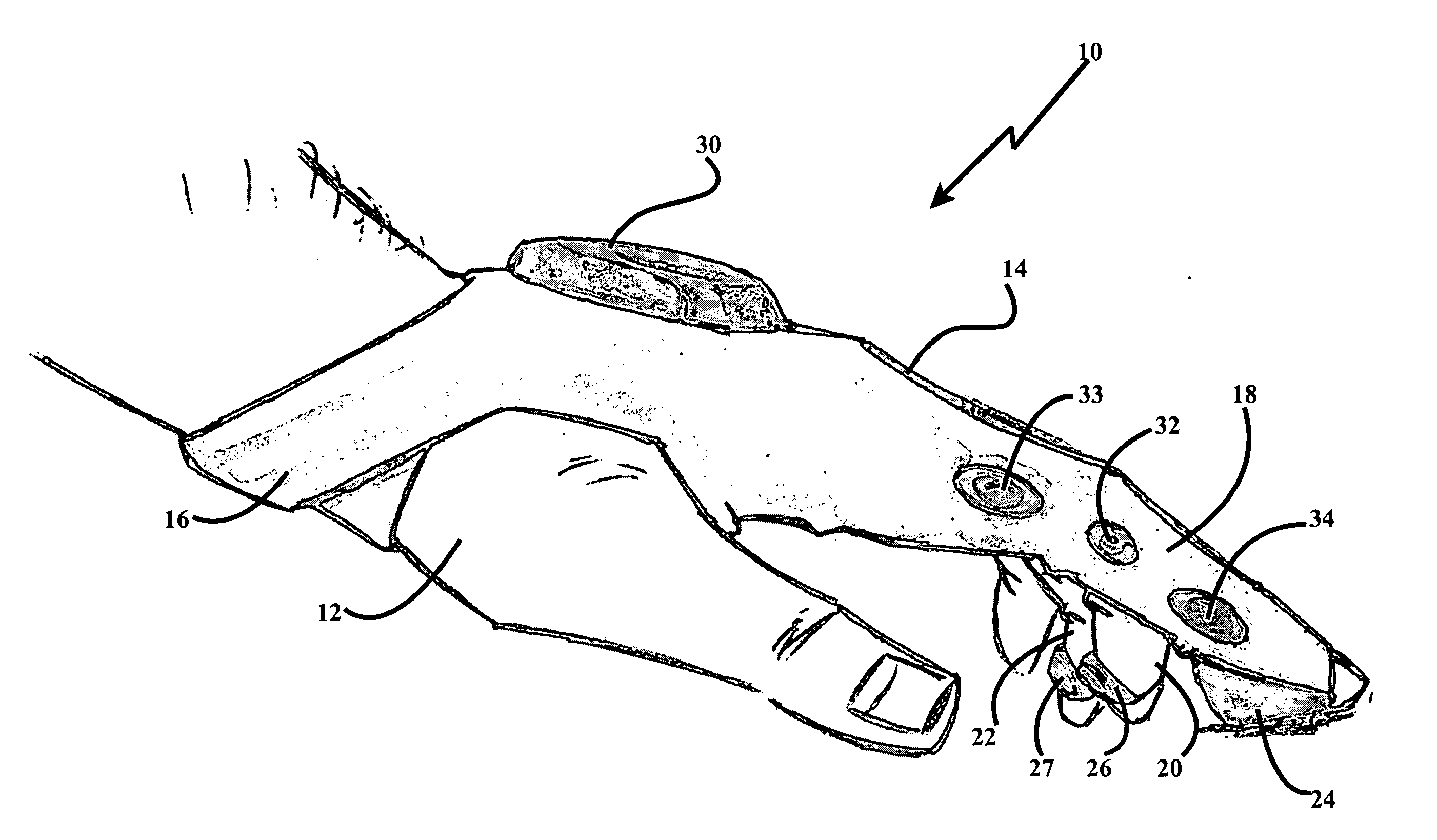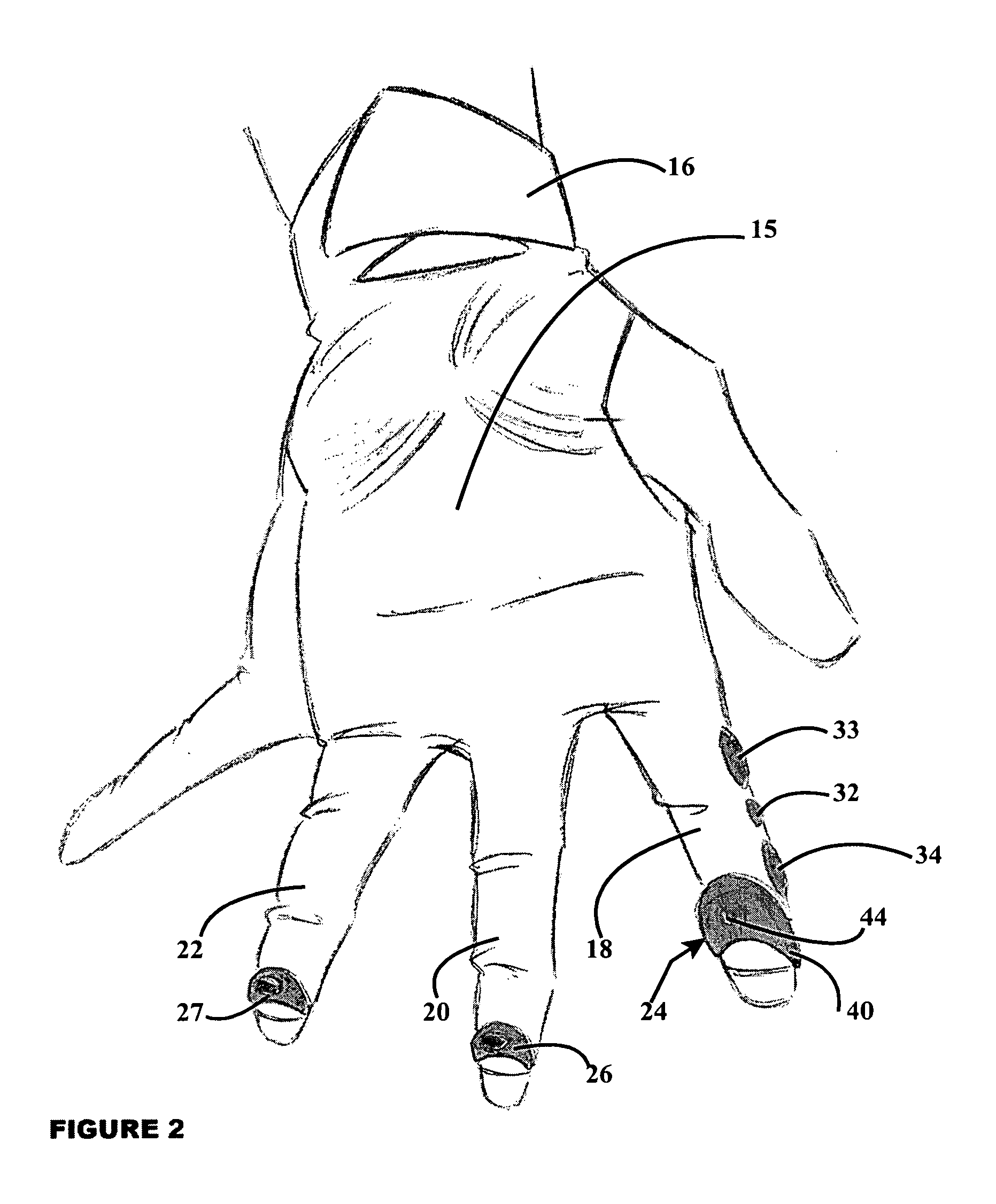Computer mouse on a glove
a mouse and glove technology, applied in the field of peripheral computer input devices, can solve the problems of increasing the incidence of carpal tunnel syndrome among mouse users, one mouse size certainly does not fit all hand sizes, and reducing so as to reduce the stress and strain on muscles and tissues, the effect of maximizing performan
- Summary
- Abstract
- Description
- Claims
- Application Information
AI Technical Summary
Benefits of technology
Problems solved by technology
Method used
Image
Examples
Embodiment Construction
[0058] Referring to the drawings, FIG. 1 shows one embodiment of the applicant's computer input device 10 fitted on a user's left hand 12. The computer input device 10 includes a glove-like apparel 14 secured to the wrist with an adjustable strap or brace 16. Glove-like apparel 14 includes fittings for an index finger or digit 18, a middle finger 20 and a ring finger 22. A tracking device 24 is shown attached to the fitting for index finger 18 of glove 14 and pressure plates 26, 27 are shown attached to the fittings for middle finger 20 and ring finger 22, respectively. A transmitter 30 is attached to the top of glove 14 for positioning on the back of hand 12, and scroll / page buttons 32, 33, 34 are shown attached to the side of the fitting for index finger 18 where they can be easily accessed by the thumb of the user's hand 12.
[0059] It will be appreciated by the reader that the particular configuration of input device 10 shown in the Figures is for illustrative purposes only. Depe...
PUM
 Login to View More
Login to View More Abstract
Description
Claims
Application Information
 Login to View More
Login to View More - R&D
- Intellectual Property
- Life Sciences
- Materials
- Tech Scout
- Unparalleled Data Quality
- Higher Quality Content
- 60% Fewer Hallucinations
Browse by: Latest US Patents, China's latest patents, Technical Efficacy Thesaurus, Application Domain, Technology Topic, Popular Technical Reports.
© 2025 PatSnap. All rights reserved.Legal|Privacy policy|Modern Slavery Act Transparency Statement|Sitemap|About US| Contact US: help@patsnap.com



